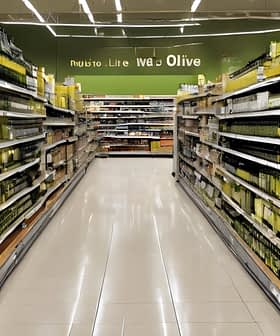Global olive oil consumption may be on the path to recovery.
According to the latest data from the International Olive Council (IOC), global consumption is expected to rise by ten percent in the 2024/25 crop year compared to the previous campaign.
If confirmed, this would mark a significant rebound following the 2.6 percent decline recorded in the 2023/24 crop year compared to the previous season.
See Also:Olive Council Data Shows Latest Harvest Results, Emerging TrendsAs a result, global consumption in 2024/25 is projected to surpass 3,064,500 metric tons, up from the estimated 2,780,000 tons in 2023/24.
Notably, several olive oil-producing countries have seen significant fluctuations in consumption over the past six years.
According to IOC estimates, Spain, the world’s leading olive oil producer, has recorded a steady decline in consumption, remaining below 500,000 tons since the 2022/23 campaign.
Spain consumed 519,000 tons in 2019/20, 541,000 in 2020/21 and 580,000 in 2021/22. However, consumption plummeted to 363,000 tons in the 2022/23 crop year as extreme climate conditions severely impacted production and drove up prices across the Mediterranean.
Since then, consumption has gradually recovered. The IOC estimates 402,000 tons for 2023/24 and projects an increase to 460,000 tons in 2024/25.
Although these figures remain well below the record 580,000 tons reported in 2021/22, they align with the ten-season average of 483,850 tons.
Italy, a major olive oil producer, has maintained relatively stable consumption over the past five seasons, averaging 426,000 tons.
However, the IOC projects a four percent decline for 2024/25. If confirmed, this would mark the first time Italian olive oil consumption falls below 400,000 tons, reaching an estimated 395,000 tons.
If confirmed, this would represent a third consecutive year of declining olive oil consumption in Italy.
Overall, total olive oil consumption in the European Union is expected to exceed 1,326,000 tons in the 2024/25 crop year, reflecting a seven percent increase over the previous season.
“The European Union has experienced a downward trend in olive oil consumption in recent years,” the IOC said.
“Although global consumption has nearly doubled since the 1990/91 crop year, the E.U. has reduced its share of total consumption, dropping from over 70 percent in 2004/05 to around 45 percent in recent crop years,” the IOC remarked.
Among other key olive oil-producing countries, IOC projects a decline in consumption only in Algeria (-1 percent) and Egypt (-11 percent).
Major olive oil-importing countries are also expected to increase their purchases. In the United States, consumption is projected to grow by eight percent in 2024/25 compared to the five-year average.
China and Australia are also projected to significantly increase the total value of their olive oil imports.
Interestingly, olive oil consumption in Turkey is also gaining momentum, with a 21 percent increase expected in 2024/25 compared to the five-year average.
Turkey anticipates a significant olive oil production rebound in the current crop year, positioning the country among the world’s top producers.
Meanwhile, global table olive consumption is expected to remain stable, reaching 3,000,000 tons in 2024/25, compared to the estimated 2,900,000 tons in 2023/24.
The IOC highlighted how several countries have significantly expanded their table olive production over the past 30 years.
Since the 1990/91 crop year, Egypt’s table olive production has surged from 11,000 to 520,000 tons in 2023/24. Over the same period, Algeria’s output increased from 14,000 to 285,000 tons, while Turkey’s rose from 110,000 to 350,000 tons.
The IOC examined price fluctuations in its latest market analysis and identified a few notable trends.
One key trend is the fluctuation of olive oil prices at the mill. In major markets such as Jaén, Spain, and Chania, Greece, the price peaks recorded between October 2022 and October 2023 have decreased significantly.
As of October 2024, prices in both markets had dropped considerably. If this trend continues, prices in both countries could fall below €400 per 100 kilograms.
However, the situation in the Italian market presents a stark contrast.
In Bari, prices remain high at €950 per 100 kilograms, nearing the record levels seen in 2023. This trend aligns with a particularly challenging season for Italian olive oil producers.








